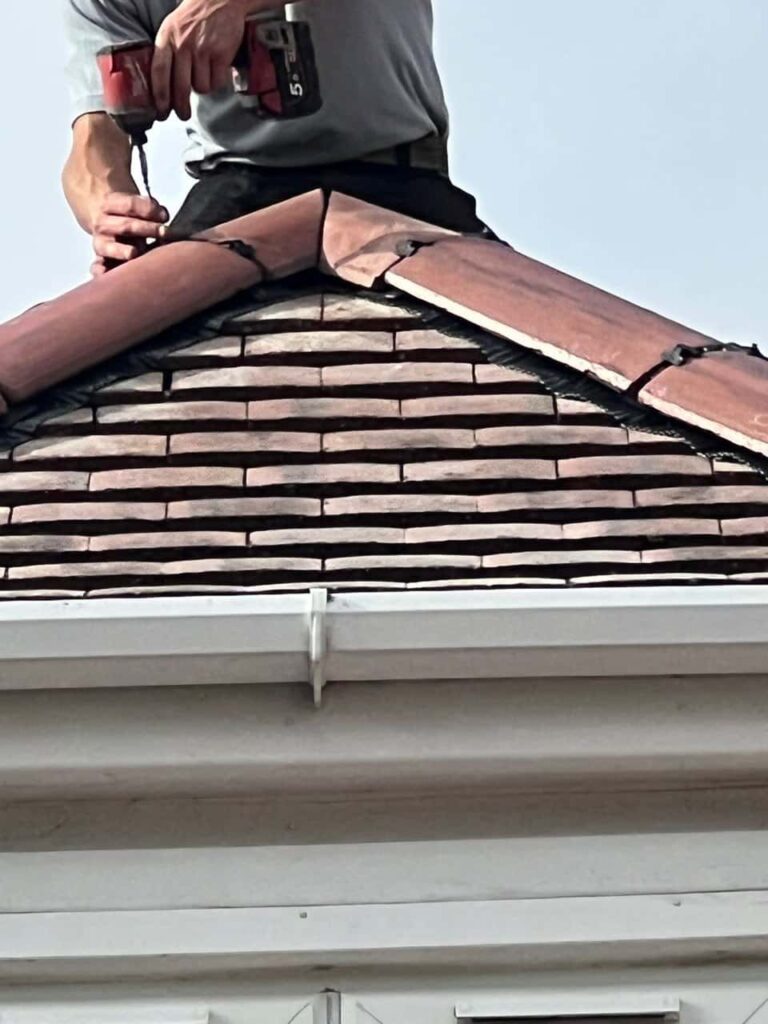Roof tiles are designed to protect your home from the elements, but over time, they can loosen, slip, or crack due to exposure, ageing, or weather damage. These issues might seem minor, but if left unaddressed, they can quickly lead to leaks and structural problems. For homeowners in Countesthorpe, knowing how to distinguish between slipped and cracked tiles—and understanding what to do next—is crucial. Countesthorpe Roofing Repairs explains how to identify the differences and the best way to deal with them.
Why Roof Tiles Fail
Tiles are constantly exposed to wind, rain, frost, and heat changes, which cause them to expand and contract. Over the years, this movement, along with natural wear or loose fixings, can weaken the roof’s structure. In many cases, nail corrosion, frost damage, or impact from debris contributes to the problem. Regular maintenance and professional inspections help catch these issues before they lead to more serious damage.
How to Identify a Slipped Tile
A slipped tile is one that has moved out of position, usually due to broken fixings, rotten battens, or wind damage. Even a small movement can expose the underlay and allow rainwater to seep through.
Common signs of a slipped tile include:
- Tiles that appear uneven or out of line with the others
- Visible gaps in the roof pattern
- Tiles resting on top of others or hanging slightly off the edge
- Damp patches or signs of moisture inside the loft or on ceilings after rain
- Whistling or rattling noises in windy weather
A slipped tile should be repaired promptly, as water can quickly find its way beneath surrounding tiles, leading to leaks and rot.
How to Spot a Cracked Tile
Cracked tiles are often harder to detect but can be just as damaging. They occur when the tile surface splits or fractures—often from impact, frost, or simple ageing. Once a crack forms, water can penetrate through, causing damage to the underlay or internal roof structure.
Typical signs of cracked tiles include:
- Hairline fractures or visible splits in the tile surface
- Discolouration or dark streaks where water has seeped through
- Moss or algae forming along cracks or joints
- Damp areas appearing in your loft or on interior ceilings
- Isolated patches of water staining after rain
Even a small crack can widen with freeze-thaw cycles, turning a minor issue into a major repair if ignored.
The Difference Between Slipped and Cracked Tiles
Both slipped and cracked tiles allow water to enter your roof, but they differ in how the problem develops.
- Slipped tiles are usually caused by loose fixings, nail corrosion, or wind uplift. The tile moves out of place, leaving an exposed area beneath.
- Cracked tiles are the result of impact or wear, creating a fracture that lets water pass through the tile itself.
In short, a slipped tile affects the position and protection of the roof, while a cracked tile compromises the integrity of the tile material. Both need professional attention to restore your roof’s weatherproofing.
What to Do If You Notice Either Problem
Step 1: Inspect from Ground Level
If you suspect damage, perform a safe, visual check from the ground or through an upstairs window. Look for uneven rows, missing tiles, or visible breaks. Never attempt to walk on the roof—it’s unsafe and can cause more damage.
Step 2: Check Inside Your Loft
Look for any signs of water ingress, including damp insulation, stained timbers, or daylight coming through the roof. These are early indicators that tiles may be damaged.
Step 3: Contact a Professional Roofer
Once you’ve identified a potential issue, arrange an inspection with Countesthorpe Roofing Repairs. Our specialists can confirm whether tiles are slipped, cracked, or both, and provide a long-lasting repair solution. Quick professional attention prevents further damage to the roof’s underlay and timbers.
Preventing Future Damage
Prevention is always better than cure when it comes to roof maintenance. Simple steps can help avoid recurring issues:
- Schedule regular inspections, especially after storms or high winds.
- Keep gutters and downpipes clear to prevent water from backing up under tiles.
- Trim nearby trees to stop branches from falling onto the roof.
- Watch for early signs of wear, such as discoloured tiles or sagging sections.
- Address small repairs promptly before they escalate into larger problems.
Consistent maintenance helps your roof withstand the unpredictable British weather and prolongs the life of your tiles.
Why Professional Repairs Matter
Attempting DIY repairs on a roof can be dangerous and often leads to further issues if done incorrectly. Professional roofers have the right tools, safety equipment, and experience to carry out repairs safely and effectively. Countesthorpe Roofing Repairs uses trusted methods to resecure or replace damaged tiles, ensuring your roof remains watertight and durable.
Conclusion
Both slipped and cracked tiles are early warning signs that your roof needs attention. A slipped tile exposes the underlay to rain and wind, while a cracked tile allows water to seep through the surface. Ignoring either can lead to costly damage over time. Homeowners in Countesthorpe can rely on Countesthorpe Roofing Repairs for expert diagnosis and repair, ensuring their roof continues to protect their property through every season.
Call us on: 0116 216 1796
Click here to find out more about Countesthorpe Roofing Repairs
Click here to complete our contact form and see how we can help with your roofing needs.

